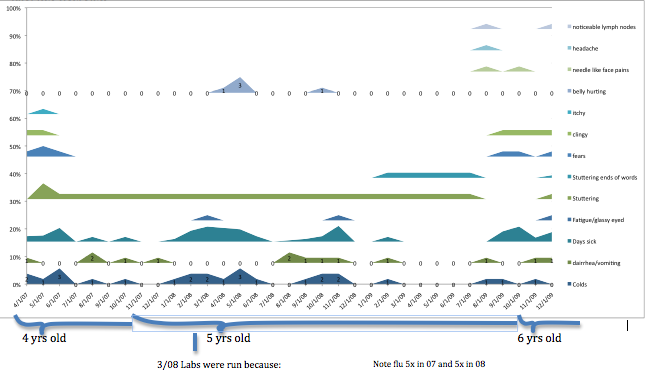
Many thanks to Winona Daily News reporter Patrick Anderson forhis Dec. 8 article that brought to light the Lyme disease policydiscussion taking place at Winona Health.
Many complicated issues surround Lyme disease, and Anderson touchedon a few.
I believe Winona-area residents deserve to know what it could meanto them if the Infectious Diseases Society of America guidelinesbecome the rule.
Lyme disease is a complex disease — particularly when accompaniedby a co-infection, such as anaplasmosis and babesiosis, which arepresent in a high percentage of deer ticks in the Winona area,according to a recent St. Mary’s University study.
There are about a hundred strains of the bacteria that cause Lymedisease in Minnesota. once in the body, the bacteria don’t stay inthe blood stream long; they can work their way into tissues, cells,nervous system, joints, muscles, brain and heart. They can changeform or lie dormant, hiding from detection for months oryears.
These characteristics make the bacteria particularly hard to detectby blood tests, especially those that were designed to detect onlya handful of antibodies generated by a single strain.
These “standard” tests recommended by the IDSA will be the solediagnostic tool if the Winona Health Lyme policy is adopted.
In a statement, Winona Health wrote, “we support evidence-basedresearch and protocols which are the established standard ofcare.”
According to David Sackett, a leader of the evidence-based medicineapproach, “Good doctors use both individual clinical expertise andthe best available external evidence, and neither alone is enough.Without clinical expertise, practice risks becoming tyrannized byevidence, for even excellent external evidence may be inapplicableto or inappropriate for an individual patient. Without current bestevidence, practice risks becoming rapidly out of date, to thedetriment of patients.”
“Clinical” expertise takes into account a patient’s medicalhistory, exposure to deer-tick habitat or knowledge of a bite, andwhat treatment will be best tolerated. Additionally, evidence-basedmedicine relies on patient values, “the unique preferences,concerns and expectations each patient brings to a clinicalencounter and which must be integrated into clinical decisions ifthey are to serve the patient,” writes Sackett.
If the IDSA guidelines are mandated, physicians will not be able touse their best judgment in consulting with a patient, but will belimited by a set of recommendations that have scant scientificevidence behind them.
Lyme and other tick-borne diseases affect each person differently.some patients have success with the IDSA-recommended antibioticprotocol, while others need a longer, more aggressive course oftreatment.
Each patient must decide what is best for them, based on therecommendation of their doctor, taking into account the risks ofantibiotic side-effects versus the often debilitating symptoms ofthe disease.
If “the established standard” is mandated, patients will no longerhave that choice. whether their health is improving or not, afterthe IDSA-recommended course, their treatment will be cut off.
Dr. Elizabeth Maloney, who has developed accredited physiciancourses on Lyme disease, writes that the Lyme disease bacteria“doesn’t develop resistance but some strains start with an abilityto tolerate certain antibiotics. Antibiotic tolerance variesbetween bacterial strains.”
The safety of long-term oral antibiotics is taken for granted inother illnesses that are far less incapacitating than Lyme, such aschildhood ear infection, adolescent acne and adult rosacea, saysMaloney.
It is also worth noting that the Union of Concerned Scientistsreport that 70 percent of the antibiotics consumed in the U.S. areby feed animals. To offset crowding and poor sanitation on feedlots, low doses of antibiotics are added to animal feed, promotingthe development of antibiotic-resistant strains of bacteria thatcan spread to humans.
I am confident that the thoughtful physicians at Winona Health willtake these issues into consideration on Dec. 20 when they votewhether to adopt the IDSA guidelines for the diagnosis andtreatment of Lyme disease, human granuloctytic anaplasmosis andbabesiosis.